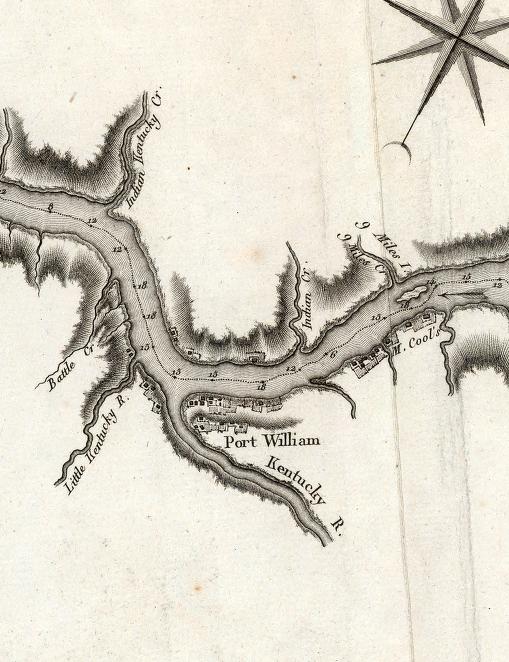The name Indian-Kentuck Creek is distinctive—no other stream in the
There have been a variety of theories about the name's origin.
One was reported in the 1884 obituary of Elisha Short. Short, who came to what is now
The Indian-Kentuck's route may have appeared on a crude map, known as the Trader's Map, dated 1753, which shows an unnamed stream on the Indiana side of the Ohio Rover, just downstream from the mouth of the Kentucky River, and in the right spot in relation to other (also unnamed) streams on the map to be the Indian-Kentuck.
A far more accurate map drawn, by Thomas Hutchins and published in
The first known use of the name came on May 3, 1786 when the Continental Congress adopted an ordinance describing the survey of "the tract of Territory lying upon the river
But the name was probably in use even earlier. Drawn in 1784, but not published until 1793, John Filson's map of Kentucky, which shows Southern Indiana as well as Kentucky, clearly labeled as stream as the Indian-Kentucky Creek
The name appeared several maps published in the 1790s and the first decade of the 1800s, several based on Hutchins fine work. Sometimes the name Indian-Kentucky was applied to what is now called the East Prong, sometimes to Brushy Fork. At other times, the name West Fork, the second county feature to receive an English name, was applied to the branch that still carries the name.
In 1796, Henri Collot, a French general on a spying mission, wrote in his diary that he passed the Indian-Kentucky Creek as he drifted down the
And the origin of the name? Accounts of travelers in the early 1800s spell that out.
Fortescu Cummings, who toured the Ohio River valley from 1807 through 1809, said many streams on the south side of the


No comments:
Post a Comment